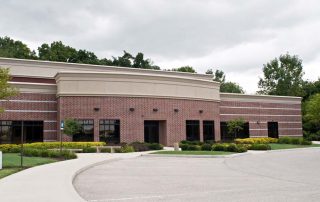When it comes to your Commercial Property, hire us to Highlight Building Architecture Using Landscaping!
Pugh's Earthworks Landscape design can be used to highlight architectural details in your garden. This can transform a commercial building into a work of art, or even turn the courtyard into a work of art. Landscaping with plants that complement the architecture and materials used in the building will draw attention to these details and make them stand out in a positive way. In this article we discuss ways that Pugh's Earthworks is trained to Highlight Building Architecture Using Landscaping. When you are highlighting building architecture, think about the overall look of the structure. Do you want to use plants and flowers that reflect its color or design? Or would you prefer something more subtle? You can also consider using plants with complimentary colors, which will create contrast without being too jarring for viewers. When it comes to landscaping around a building, trees and shrubs are often used as a backdrop and provide privacy from neighboring properties. Trees should be placed far enough away from buildings so that they won't interfere with them if they grow over time. Groundcovers like grasses can be used underneath trees as well as between other plantings; this provides insulation from cold temperatures in winter months but still allows for plenty of sunlight throughout spring through autumn periods when there are no leaves on trees yet. When it comes to landscaping around a building, trees and shrubs are often used as a backdrop and provide privacy from neighboring properties. Plants and Flowers to reflect the building's architecture. Use plants and flowers that are native to the area. If you are working on a building in a city, use plants that grow well in that climate. If your building is on sandy soil, then choose plants that do not require much water to survive (like cacti). Do not plant trees whose roots might damage underground pipes or cables when they grow too large! Choose appropriate landscaping materials for your water source--and remember: if it rains all the time where you live, then there's no point investing money into an elaborate irrigation system! While you want to create a garden that is complementary to your building, it is also important not to overwhelm the structure with too many plants. To avoid this, we recommend creating a color scheme by using plants and flowers with complimentary colors. Use purple flowers such as lilacs or bluebells if your building has dark green siding on it. Use red tulips alongside brick walls; although these two items do not match exactly (red vs brown), they are still similar enough in hue so as not to clash when placed next each other on purpose. Highlight Building Architecture Plants The plants you choose should be in contrast to the building's color, material, and texture. If the building is white or light colored with a smooth surface, use plants with dark foliage and/or bark. If your building has a rough texture add soft looking plants such as ferns or grasses that are not too tall, [...]

